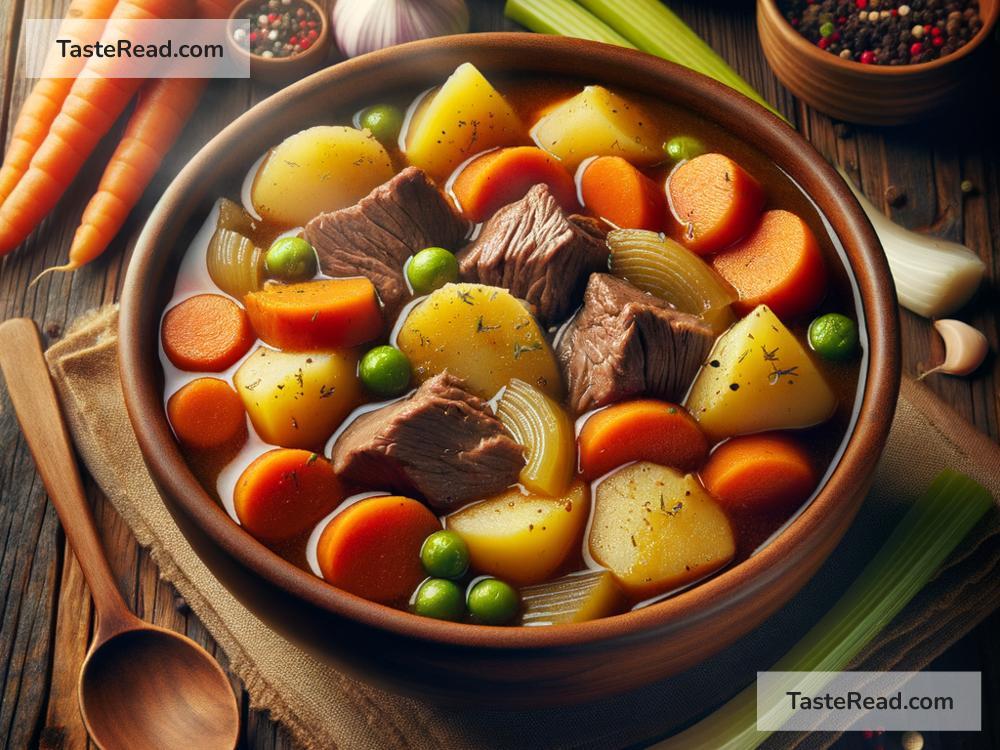How to Create Classic Beef and Vegetable Stew
A warm beef and vegetable stew is the perfect comfort food for chilly days. Its hearty flavors and rich aroma make it a great meal for the entire family. The best part is that it’s simple to make — you just need a few basic ingredients and some time to let it cook. In this step-by-step blog, I’ll show you how to create a classic beef and vegetable stew using simple English, so everyone can follow along easily.
What Makes Beef and Vegetable Stew Special?
Stew is one of the oldest methods of cooking. By mixing meat, vegetables, and liquid, you create a dish that’s both nutritious and hearty. Cooking it slowly allows the flavors to blend, making the final dish rich, tender, and delicious. You may already have most of the ingredients in your kitchen, which is why beef stew is such an approachable recipe for beginners and experienced cooks alike.
Ingredients You’ll Need
Before cooking, gather the following ingredients:
- Beef: Use beef chunks suitable for stews (sometimes labeled as “stew meat”). These cuts soften beautifully when cooked low and slow.
- Vegetables: Carrots, potatoes, onions, celery, and peas are commonly used. Feel free to adjust based on what you have.
- Broth: Beef broth or stock will give the stew its deep, savory flavor.
- Tomato paste or diced tomatoes: These add richness to the stew.
- Garlic and herbs: Garlic, thyme, bay leaves, and parsley enhance the flavor.
- Flour: A small amount of flour helps thicken the stew’s broth.
- Oil: Use olive oil or vegetable oil for browning the meat.
- Salt and pepper: Seasoning is key!
Step-by-Step Instructions
1. Prepare Your Ingredients
Before you start cooking, it’s important to prep your food. Cut the beef into bite-sized chunks if it isn’t already pre-cut. Peel and chop the vegetables — carrots can be sliced into rounds or chunks, potatoes diced into cubes, onions chopped into small pieces, and celery cut into small slices. Keep them in separate bowls for easy access.
2. Brown the Beef
Heat a large pot or Dutch oven over medium-high heat. Add a drizzle of oil. Once the oil is hot, add the beef chunks (seasoned lightly with salt and pepper) and brown them on all sides. This step seals in the juices and adds great flavor to the stew. Once browned, remove the beef and set it aside.
3. Cook the Aromatics
In the same pot, add a little more oil if needed and toss in the chopped onions and garlic. Stir them around until they’re soft and fragrant — about 2-3 minutes.
4. Add Flour for Thickening
Sprinkle a tablespoon of flour over the cooked onions and garlic, stirring well. This helps thicken the stew later. Cook for a minute to prevent the flour from tasting “raw.”
5. Build the Base
Next, add the beef back into the pot along with the broth (around 4 cups) and either tomato paste or diced tomatoes (one small can). Stir everything together well. At this point, add your herbs: a couple of bay leaves, a handful of chopped parsley, and a pinch of dried thyme. These will add layers of flavor as the stew cooks.
6. Add the Vegetables
Toss in the larger, tougher vegetables first — carrots, potatoes, and celery. These need more time to cook, so putting them in early ensures they soften properly. Save softer vegetables like peas for later in the process.
7. Simmer Slowly
Reduce the heat to low, cover the pot with a lid, and let the stew simmer gently for 1.5 to 2 hours. This is where the magic happens! The beef will become tender, the vegetables will soak up the broth, and the flavors will meld together.
8. Add Final Touches
About 15 minutes before the cooking time is up, add any soft vegetables, such as peas or canned green beans. Taste the stew and adjust the seasoning — you might need a bit more salt or pepper, depending on your preference.
9. Serve Hot
When everything is cooked and the stew has thickened to your liking, remove the bay leaves and turn off the heat. Spoon the stew into bowls and serve it hot. It pairs perfectly with crusty bread or rolls for dipping.
Tips for Perfect Beef Stew
- Take Your Time: Low and slow cooking is the key to tender beef.
- Adjust Liquid: If the stew looks too thick, add a splash of water or broth. If too thin, let it simmer uncovered for a bit longer.
- Use Fresh Herbs: Fresh parsley, thyme, or rosemary can make a noticeable difference.
- Make It Ahead: Stew tastes even better the next day, so consider making it ahead of time.
Conclusion
Creating a classic beef and vegetable stew doesn’t have to be complicated. With simple ingredients, basic cooking tools, and patience, you’ll have a steaming pot of deliciousness to share with loved ones. Whether it’s a family dinner or a quick make-ahead meal, this dish is sure to fill your kitchen with warmth and comfort. Try it today and enjoy the classic flavors of this timeless recipe!


